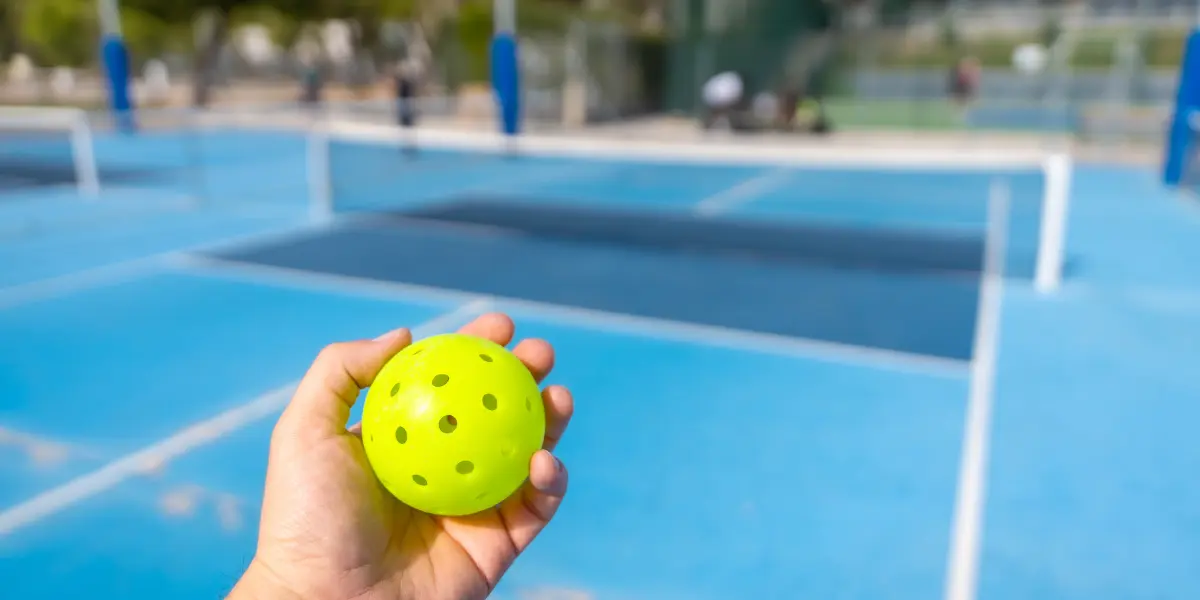Are you wondering what type of ball is used in pickleball? Whether you’re new to the game or upgrading your gear, understanding the difference between indoor and outdoor pickleball balls is key to better performance and more enjoyable play.
In this blog, we’ll break down the two main types of pickleball balls, indoor and outdoor, and explain how their material, hole design, and bounce impact your game.
So, before you step onto the court, let’s make sure you’re using the right ball for your playing environment.
What Are Pickleballs Made Of?
Pickleballs are made from a type of durable plastic known as polymer. This lightweight material gives the ball its signature feel during play. While all pickleballs are made from plastic, the exact construction can vary depending on whether the ball is designed for indoor or outdoor use.
Indoor balls often use a softer plastic that provides better control and quieter play. Outdoor balls, on the other hand, are made with a harder plastic to handle rough surfaces and wind.
The choice of material affects everything from bounce to lifespan, making it one of the most important aspects of the ball.
What Type of Ball is Used in Pickleball
There are two types of Pickleball balls you need to know about, indoor balls and outdoor balls. Each is designed with specific features that suit its playing environment.
Indoor Pickleball Balls
Indoor pickleball balls are made for smoother surfaces such as gym floors or indoor courts. They are usually made of slightly softer plastic, which makes them quieter and easier to control.
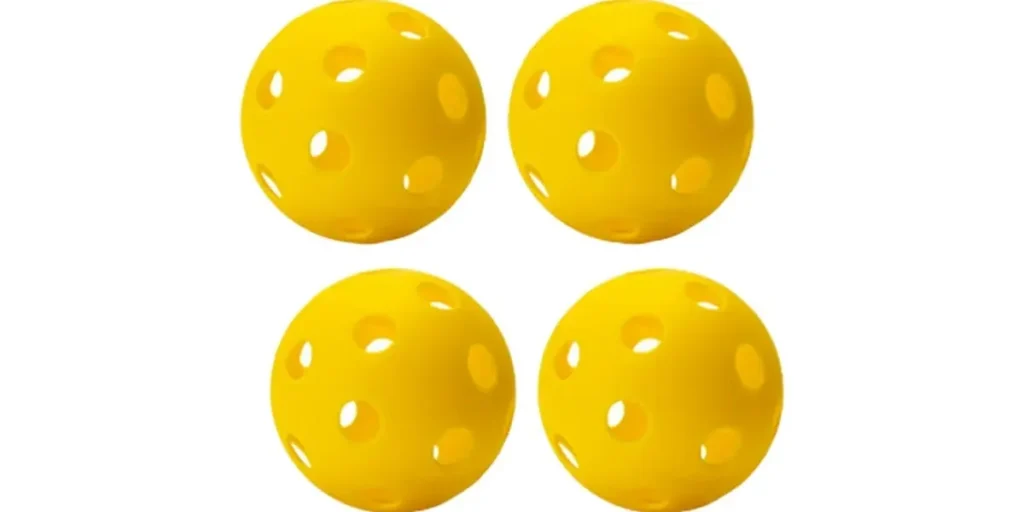
One of the most noticeable features is the number of holes indoor balls typically have, 26 larger holes. This design helps reduce drag and allows for a softer feel during rallies.
These balls tend to have a slower bounce and are ideal for players who prefer a game based more on control than speed. They also do not crack as easily since they are used on polished indoor floors. However, they can become soft over time and may not hold their shape as long as outdoor balls.
Outdoor Pickleball Balls
Outdoor pickleball balls are built for durability and high performance on rougher surfaces like concrete or asphalt. They are made with harder plastic to withstand both the elements and the force of faster-paced games. These balls feature 40 smaller holes, which help them stay stable in windy conditions.
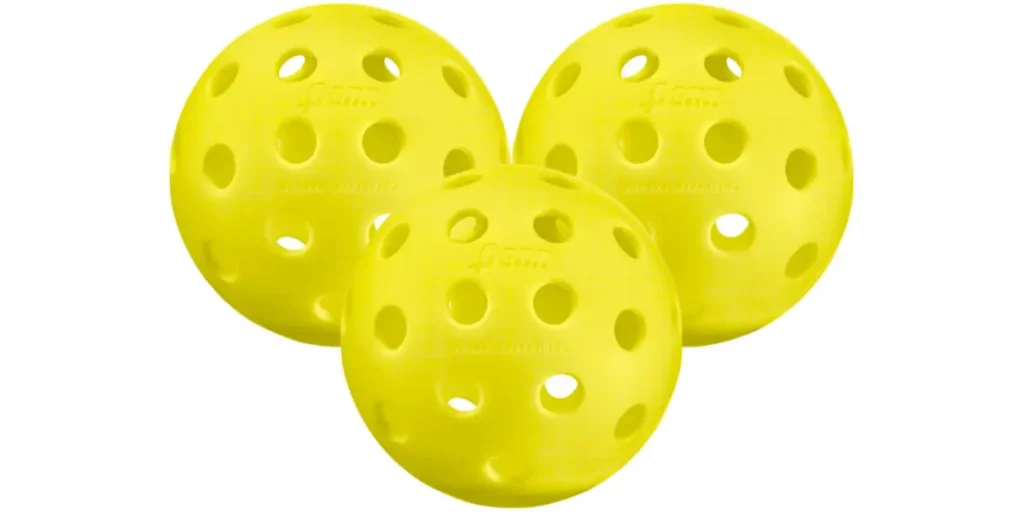
Since outdoor play involves more powerful shots and unpredictable bounces, outdoor balls are designed to be more rigid. This makes them louder and faster compared to indoor balls.
They also tend to wear out more quickly, especially in hot weather or after frequent use. Still, their construction is essential for competitive outdoor play where speed and consistency matter most.
Indoor vs Outdoor Pickleball Balls
At first glance, all pickleball balls might look the same, but indoor and outdoor balls are built very differently. These differences are not just technical they affect how the game feels and how well you play in different environments.
| Feature | Indoor Pickleball Ball | Outdoor Pickleball Ball |
|---|---|---|
| Number of Holes | 26 larger holes | 40 smaller holes |
| Material | Softer plastic | Harder plastic |
| Bounce | Lower and more controlled | Higher and faster |
| Durability | Longer lifespan on smooth surfaces | Shorter lifespan on rough surfaces |
| Sound Level | Quieter impact | Louder pop sound |
| Wind Resistance | Less stable in wind | Designed to resist wind |
| Playing Surface | Indoor courts (wood, smooth floors) | Outdoor courts (asphalt, concrete) |
| Game Style | Slower pace with more control | Faster pace with powerful shots |
| Common Use | Recreational or casual indoor games | Competitive and outdoor matches |
Popular Pickleball Ball Brands (2024–2025)
Choosing the right brand can make a big difference in how the game feels. Some balls are designed for casual fun while others are built for serious matches and tournaments. Over the years, a few brands have stood out for their quality, consistency, and performance. Here are some of the top pickleball ball brands in 2024 and 2025.
Dura Fast 40
This is one of the most trusted outdoor balls used in many professional tournaments. It is made from hard plastic with 40 small holes and offers a fast bounce and long-lasting durability. However, it can crack faster in cold weather and tends to be louder during play.
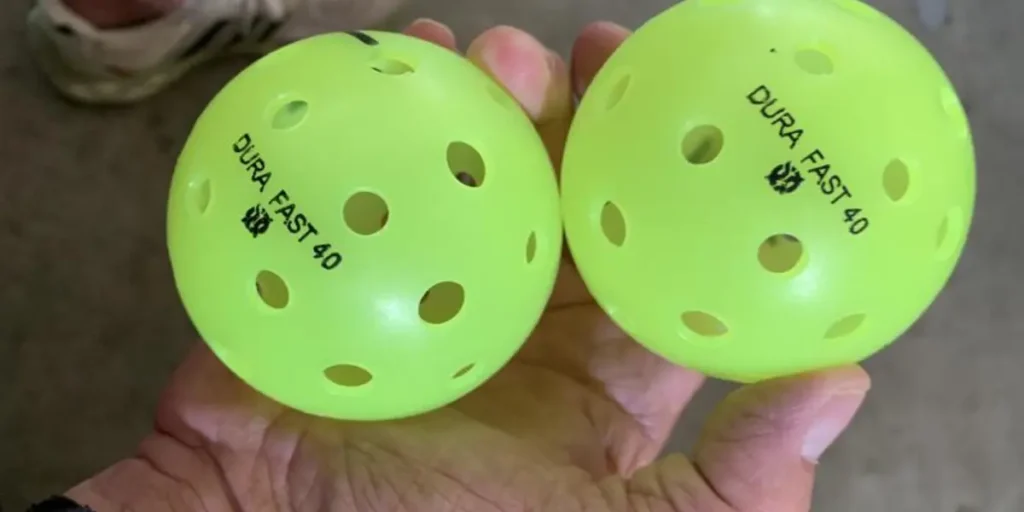
Franklin X-40
The Franklin X-40 is another favorite among both casual and competitive players. It is USAPA-approved and known for its consistent flight and bounce. It performs well both indoors and outdoors, making it a versatile choice for all levels.
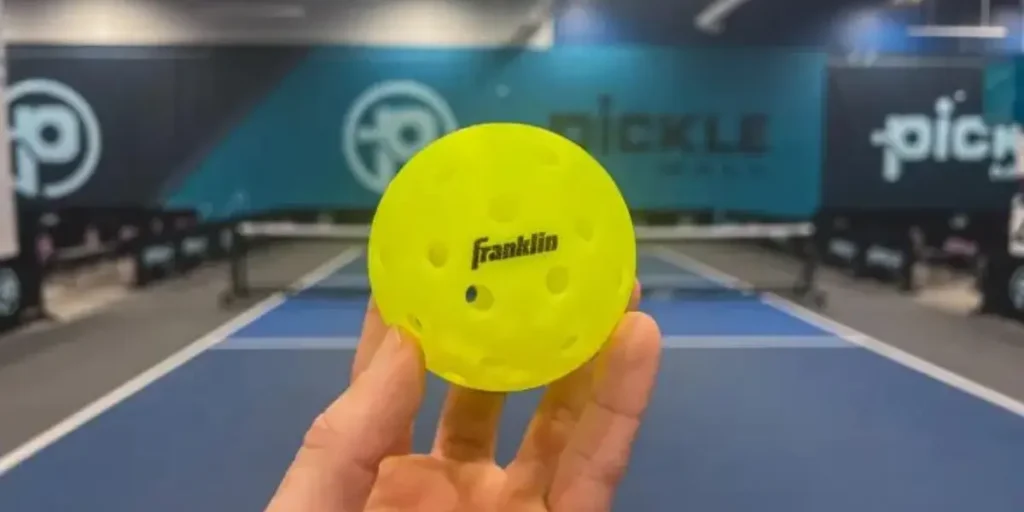
CORE Pickleballs
CORE balls are a solid option for players looking for durability and true bounce. The company focuses on premium materials and high-precision hole patterns. They are ideal for outdoor matches and training sessions.
Tourna Strike
This ball is a budget-friendly option that still delivers decent performance. It is great for beginners or those who want to practice without breaking the bank. It may not last as long as higher-end brands, but it still gives a good playing experience.
Each brand has its strengths, so it is worth trying a few to see which one feels best in your hand and on your court.
How to Identify a Quality Pickleball Ball
When you are shopping for pickleball balls, it is important to know how to spot a good one. A quality ball does not just look nice, it performs well and lasts longer during play. One of the first things to check is whether the ball is approved by USA Pickleball, also known as USAPA.
Approved balls meet official standards for size, weight, bounce, and construction, which means you can trust them for consistent play.
You should also pay attention to the bounce. Drop the ball from a certain height and see if it gives a lively and predictable bounce. The ball’s surface should feel smooth but not flimsy.
Check the seams as well, a solid pickleball will have a strong seam that is fused cleanly without any gaps. Lightweight but sturdy plastic is a good sign, especially if you are playing outdoors. In short, the better the build, the better the ball will perform under pressure.
How Long Do Pickleball Balls Last? When to Replace
Pickleball balls are not made to last forever. How long a ball lasts depends on how often you play, the type of court, the weather, and the quality of the ball itself.
On average, a good pickleball ball can last anywhere from a few games to a few weeks, depending on usage.
For casual indoor play, a ball might stay in good shape for several sessions. Outdoor balls, however, tend to wear out more quickly because they take more impact from rough surfaces and harsh conditions. You will know it is time to replace the ball when it starts to crack, lose its bounce, or feel soft when you squeeze it.
If the ball wobbles in the air or lands unpredictably, it might be warped. Another sign is a dead bounce when the ball hits the court and barely pops back up.
Some competitive players even change balls mid-match to keep their match performance sharp. Storing your balls in a cool, dry place and avoiding extreme heat or pressure can also help them last longer.
- Check out detail: How Long do Pickleballs last?
Buying Guide for Choosing the Right Pickleball Ball
Picking the right pickleball ball might seem simple, but a few smart choices can make your game smoother and more enjoyable. The first thing to consider is where you’ll be playing.
If you play mostly indoors, go with a ball designed for indoor courts, they are easier to control and quieter. For outdoor games, choose balls made with harder plastic that can handle rougher surfaces and wind.
Next, think about your skill level. Beginners often prefer balls with a softer feel and more predictable bounce, while advanced players may want something faster and more responsive.
Also, consider how often you play. If you’re on the court regularly, it makes sense to buy in bulk and go for a durable brand. On the other hand, if you just play now and then, a mid-range ball may be all you need.
Try a few different brands until you find one that matches your playing style and feels right in your hand.
FAQs
Technically yes, but it’s not recommended. Indoor balls are made of softer plastic and can wear out quickly on rough outdoor surfaces. They also tend to get pushed around by the wind more easily. For outdoor games, it’s always better to use balls designed specifically for that environment.
The holes are designed to control how the ball moves through the air. Indoor balls have fewer but larger holes for better control on smooth courts. Outdoor balls have more holes that are smaller to help the ball stay stable in the wind and travel more consistently across rougher surfaces.
Most regulation pickleball balls follow the same size and weight guidelines, especially if they are USAPA-approved. However, minor differences in hole patterns and material can affect how the ball feels and performs, even if the size is technically the same.
Yes, in some situations. Brighter colors like neon yellow or orange are easier to see, especially in low light or fast-paced games. Some indoor facilities may also have lighting that makes certain ball colors stand out more clearly against the background.
Conclusion
Understanding what type of ball is used in pickleball is more important than most new players realize. The ball affects every part of the game, from the way it bounces to how it feels on your paddle.
Whether you’re playing indoors with a softer ball or outside with a tougher one, the difference in material design and performance plays a big role in your experience on the court.
Now that you know the key features that separate indoor and outdoor balls, how long they last, and what to look for in quality, you are better equipped to choose the right ball for your game.

